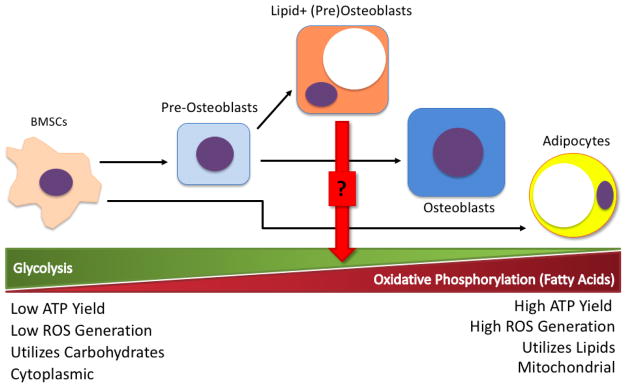Figure 2.
Shift of cellular energetics profiles through BMSC differentiation. The progenitor BMSC population is highly glycolytic and dependent on glucose for energy metabolism. As BMSCs commit to osteogenesis, the energy demands of osteoid production require metabolic processes that generate more ATP—e.g., the metabolism of fatty acids for oxidative phosphorylation. Mature osteoblasts utilize a combination of glycolysis and oxidative phosphorylation to meet their energy needs, but this energetic balance must be tightly regulated to reduce reactive oxygen species (ROS) generation and subsequent cellular damage. In contrast to BMSCs, mature adipocytes generate much of their ATP from fatty acid oxidation and oxidative phosphorylation. The metabolic profile of the lipid-positive pre-osteoblast is still in question, but the intermediate morphology of this cell type suggests that it may use both energetic processes and may potentially store lipid droplets for fatty acid metabolism under high energy demand.

